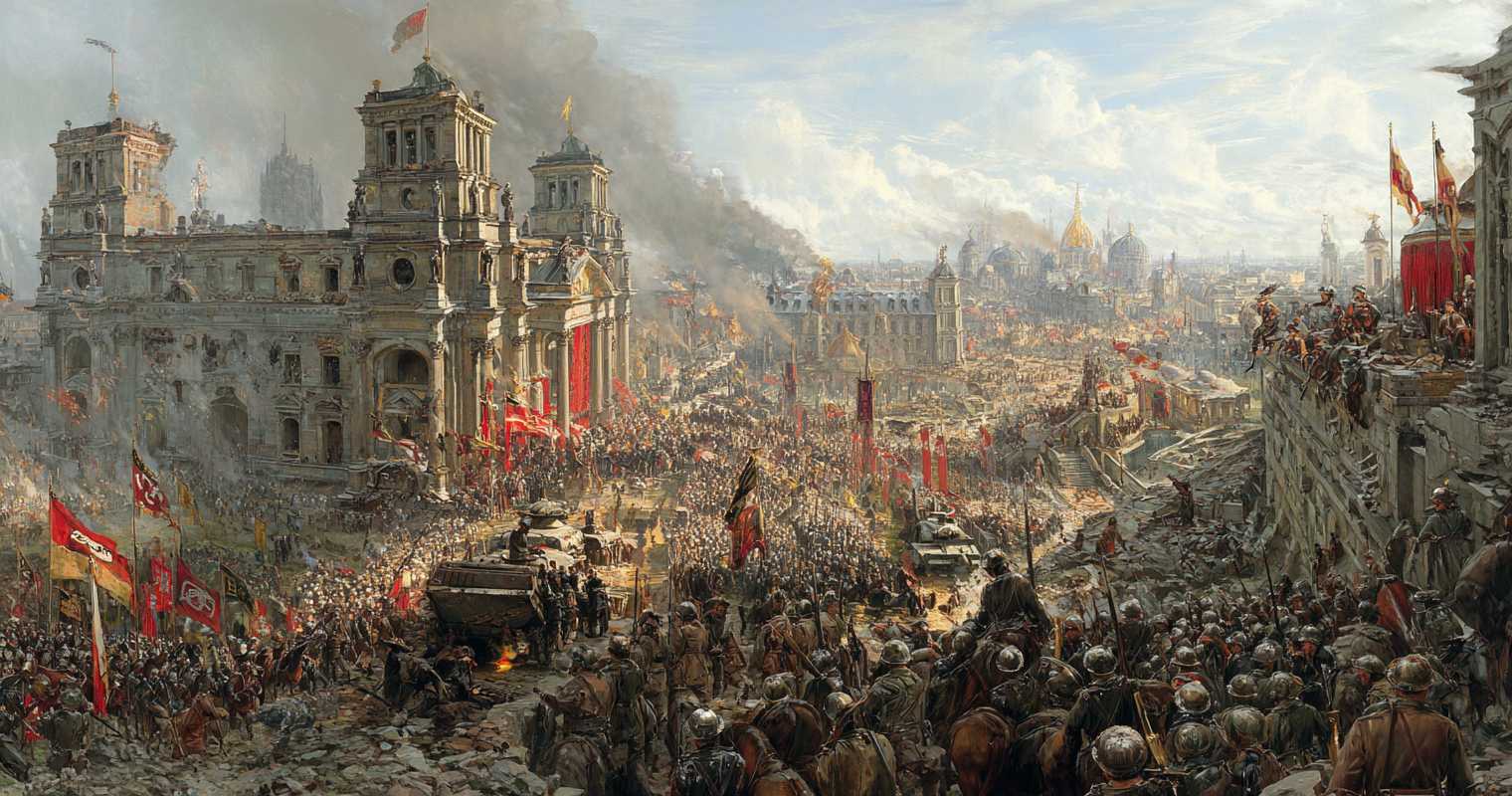
Flowing from the Black Forest to the bustling streets of Berlin, the German History Quiz captures a nation whose story is carved into music, art, and ingenuity. Germany’s past resonates in grand cathedrals, charming villages, and landscapes that inspired poets and composers alike. Its culture is a blend of precision and passion, where craftsmanship thrives, traditions endure, and progress emerges from a deep respect for heritage. Every festival, from Oktoberfest to regional folk celebrations, is a testament to a country that treasures its identity while constantly moving forward. This harmony between the old and the new forms the essence of Germany’s vibrant historical narrative.
The creativity of Germany has left a lasting imprint on the world. From groundbreaking scientific discoveries to world-class art and literature, the nation’s contributions continue to influence global thought and culture. Germany’s architecture, from medieval fortresses to Bauhaus modernism, reflects a fearless approach to design and expression. Its music, carried by the legacies of composers like Beethoven and Bach, remains a living soundtrack of historical brilliance. These achievements show a society shaped by knowledge, skill, and relentless curiosity, all deeply rooted in tradition.
This German History Quiz highlights a country that celebrates both heritage and progress. Its cobblestone streets whisper the stories of merchants and artisans who defined its early cities. Its markets brim with regional foods that bring centuries-old recipes to today’s tables. Through every craft, every festival, and every shared meal, Germany invites you to experience a history that is alive, dynamic, and ever-evolving.
Art, Music, And Cultural Identity
German art bridges centuries of creativity. From Gothic cathedrals adorned with intricate detail to the bold innovation of modern movements, it reflects a culture that values expression as much as precision. These works of beauty preserve history in a form that continues to inspire. Each creation carries the signature of a nation that has always celebrated intellectual and artistic depth.
Music remains one of Germany’s most enduring cultural treasures. Classical compositions resonate in concert halls worldwide, while regional folk songs keep local traditions alive. Choirs and orchestras pass down techniques and styles that have endured for generations. This balance between the celebrated and the intimate makes music an essential part of Germany’s cultural heartbeat.
Language and literature further enrich this identity. Writers and poets like Goethe and Schiller shaped not only national pride but also global literature. Their words continue to illuminate the human condition and reinforce the cultural foundation of Germany. Through its art and language, Germany preserves its past while speaking powerfully to the present.
Craftsmanship, Tradition, And Festivals
Germany’s reputation for craftsmanship reflects centuries of expertise. From hand-blown glass to finely engineered clocks, artisans honor techniques passed down through generations. These skills remain an integral part of the country’s cultural fabric. They serve as proof that tradition and excellence can flourish side by side.
Festivals transform Germany into a showcase of heritage and celebration. Oktoberfest, Christmas markets, and regional fairs provide glimpses into both local and national identity. These gatherings bring people together through food, music, and a sense of shared belonging. They remind participants that history is not only remembered but joyfully experienced.
Traditional costumes and rituals continue to give festivals their distinctive character. Whether it’s the colorful garments of Bavarian celebrations or the unique customs of smaller towns, these expressions reinforce the connection between community and history. Each event becomes a living bridge to the past.
Food, Architecture, And Everyday History
German cuisine reflects centuries of regional diversity. Dishes like pretzels, sausages, and hearty stews tell the story of resourcefulness and tradition. Meals are often accompanied by customs that strengthen family ties and celebrate local identity. Every shared table becomes a quiet act of historical continuity.
Architecture in Germany speaks with its own voice. Timber-framed houses stand alongside modern masterpieces, showing how history and innovation coexist seamlessly. Castles crown hilltops as reminders of a storied past, while sleek urban structures demonstrate the country’s forward-thinking vision. This visual blend creates a landscape rich in cultural texture.
Even daily life in Germany reflects its historical roots. Markets sell goods crafted with methods honed over generations. Public squares host events that turn ordinary days into cultural celebrations. In these simple but meaningful moments, history reveals itself not as something distant, but as a constant companion.
7 Fun Facts About German History
- Germany is home to over 1,500 types of sausages, many tied to regional traditions.
- The Christmas tree tradition is believed to have originated in Germany.
- Gothic cathedrals, such as Cologne Cathedral, took centuries to complete.
- Germany has over 25,000 castles and palaces, many still standing today.
- Bach, Beethoven, and Brahms all have roots in Germany’s musical history.
- Christmas markets date back to the 14th century in some German towns.
- Timber-framed houses remain a signature feature of many historical towns.
7 Serious Facts About German History
- Germany’s medieval trade guilds established high standards for craftsmanship.
- The Bauhaus movement revolutionized modern architecture and design.
- Regional dialects reflect centuries of historical and cultural diversity.
- Germany has a long tradition of academic scholarship and research.
- The preservation of historic towns is central to the nation’s cultural identity.
- Many German festivals date back hundreds of years, rooted in local customs.
- Music education remains an essential part of cultural and historical continuity.
German History – FAQ
The Berlin Wall, erected in 1961, symbolized the division between East and West Germany during the Cold War. It stood as a physical manifestation of the ideological divide between communism and democracy, separating families and communities for nearly three decades until its fall in 1989.
The reunification of East and West Germany in 1990 not only reshaped the geopolitical landscape of Europe but also marked a significant step towards European integration. It led to the expansion of the European Union and the strengthening of ties between former East and West bloc countries.
